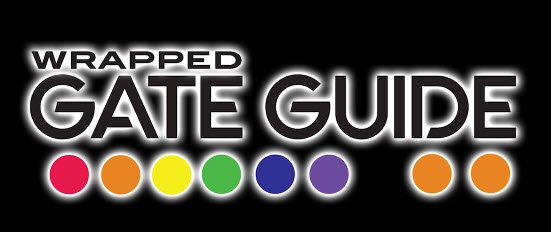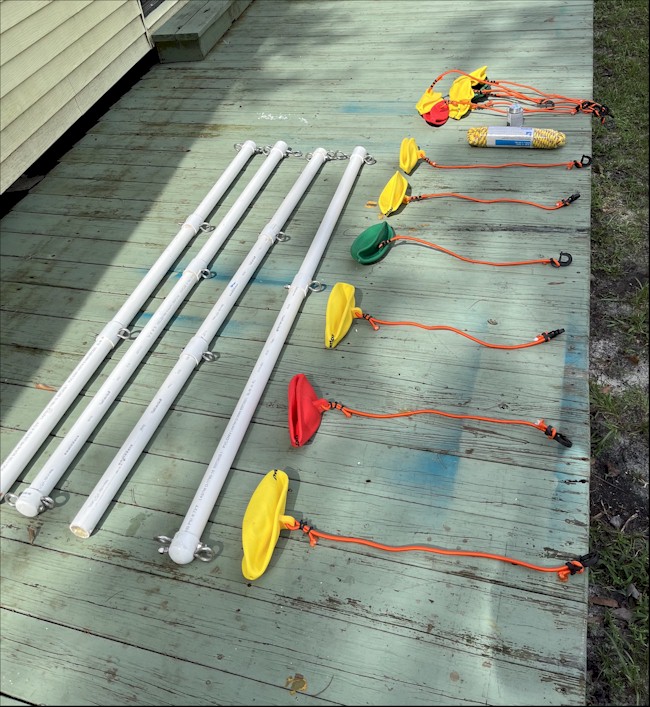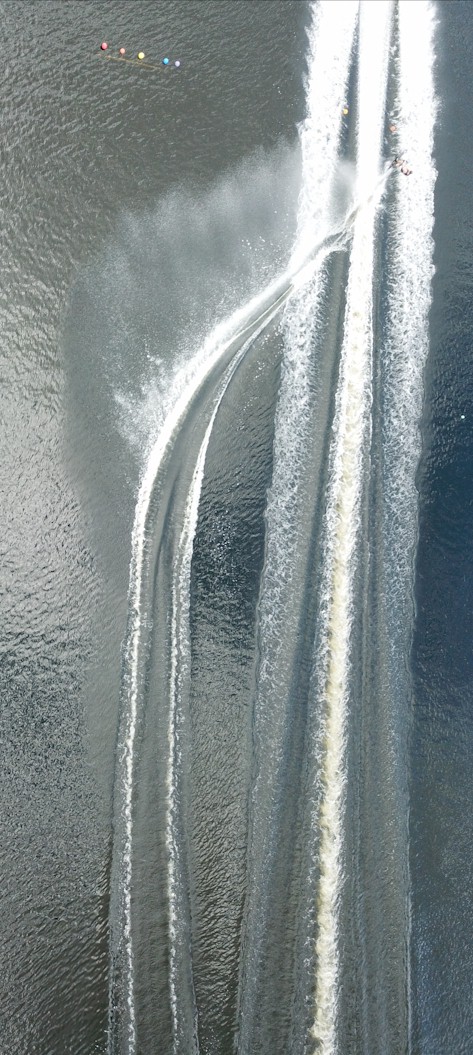Wrapped Gate Guide System
CLICK HERE TO ORDER
Welcome to the Wrapped Gate Guide System
After teaching slalom skiing for nearly 3 decades, to skiers from all across the globe. It became very apparent to me that the largest area of inconsistency with the majority of slalom ski enthusiasts and even many who have been skiing in the course for many years, was with their gate set up to start the course.
Having competed at pro level on the World Cup Slalom and Pro Tour circuit for more than 2 decades, it was also very apparent how much more accurate and consistent the pro skiers are with their gate set up and not just in their body position and stance, but in their width, speed and timing in relation to the course, boat, line length and wind.
These skills can take many many years to learn, and be consistent with even when you know what width you have to be at for each line length.
The course is all about angles and In order to take the correct angle through and across the entry gate, the combination of turning from the correct width, with the same speed as the boat, and in order to set the correct angle with your ski and have an adequate pendulum swing from left to right and space before the first wake to generate acceleration and cross course speed, is everything for the efficiency and rhythm.
I have witnessed the majority of skiers who come to ski school for lessons, go through the gates from the left buoy line of the course and turn for the gate when they think the timing looks right and yet take the gates with a broad range of widths and ski speeds, giving the ski a wide range of approaches into buoy one and expect to get the same smooth early turn on the first buoy and a smooth pass.
You will never create the same ski path, efficiency and rhythm in the course, without having the correct starting place for your turn and then learning how to make that turn consistent.
Over my time as a slalom coach, Iv work out that the best results come from teaching skiers to learn a width zone for each line length and then develop a consistency skill of turning from within that with zone, even if that means missing the gates to do so.
There are no gate judges in training and this is where you practice to turn from the correct width, speed and angle over and over and over. Going through the entry gate every time in training, but from a bunch of different widths and angles will not ensure that you get the gates in a competition and it will not make sure you are going to have the same and correct ski path the complete the course.
Let’s say the skier is a 15-off skier on the standard Red 60’ line length, then they need to be pulling out past the left side of the course by at least 9’ and as wide as 12’ wider than the course. Then they need to be matching the boat speed when its time to turn, having been gliding within the width zone of 9-12’ wider than the course. When the skier notices their ski, speed is matching the boat, they should start turning right before it would become slower than the boat speed.
This is the only way a skier can turn to the correct and consistent angle to ski the correct path in the course.
The skier has to learn turning from the correct width first, then from that width with matching boat speed and no slack line and then over and over again until they are doing so and their ski speed matches the boat and when they turn correctly that this would also put them going through the entry gates.
The ski gate turn timing should always come secondary to their gate glide width and ski speed matching the boat speed.. Very important and rarely seen in skiers with little experience.
So it was time to Develop and lay out a Gate Guide System of line up buoys that would really help with learning the correct width zones for each line length and to give a consistent guide at both ends of the course, that will help develop the skills normally learned over many more years of training when not having something to line up with and when only relying on your line of sight with the slalom course and entry gates.
-
15 off 12’ actual width 9’ minimum
-
22 off 9’ actual width 6’ minimum
-
28 off 6’ actual width 4’ minimum
-
32 off 4’ actual width 2.5’ minimum
-
35 off 2’ actual width 1’ minimum
-
38 off 0’ in line with left side of the course and no more than 6” inside of the course as minimum.
As you can see the width zones get smaller as the rope gets shorter and the skier will need to learn to become more accurate with their gate pullout width and turn point.











